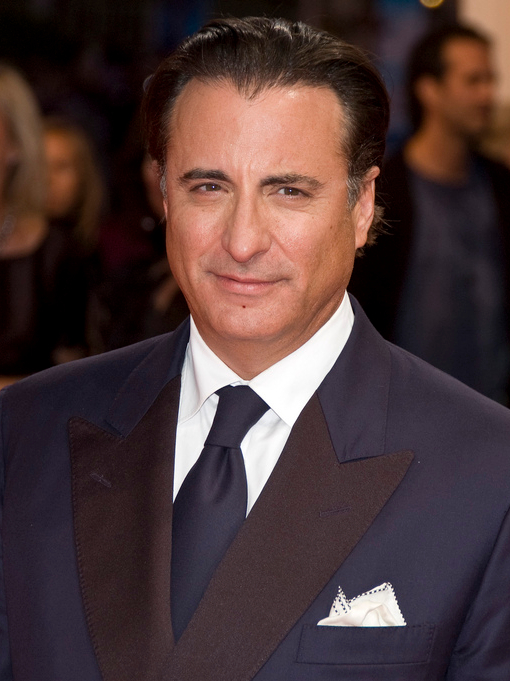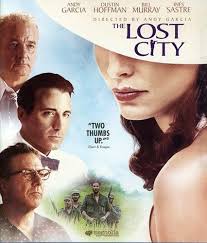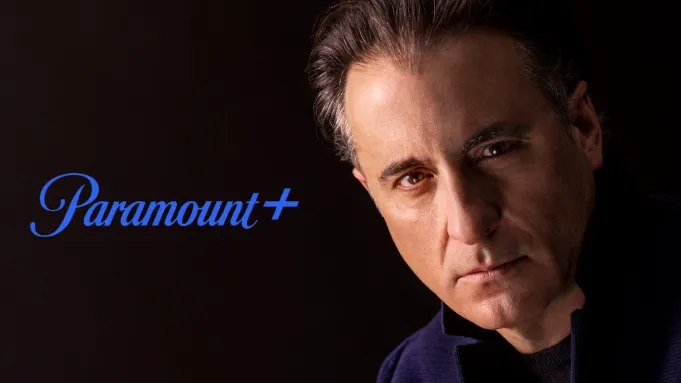
LEOPOLDO “POTOTO”/“TRES PATINES” FERNÁNDEZ, CÓMICO CUBANO. ACTÚÓ EN CINE, TEATRO Y TELEVISIÓN. FOTOS.
Leopoldo Augusto Fernández Salgado fue un comediante cubano, conocido como ‘José Candelario Tres Patines’ o ‘Pototo’, creador e intérprete del programa de radio y televisión ‘La Tremenda Corte’, que aún se presenta en la radio y se ofrece en CD, VHS y DVD.
Aunque nació en Calimete, provincia de Matanzas, el nacimiento de Fernández se registró en la ciudad de Güines, el 26 de diciembre de 1904, a unas 30 millas al sur de La Habana. A temprana edad, la familia se mudó de Güines a La Habana. Abandonó la escuela para trabajar y ayudar a su familia desde joven. Repartidor de pan; Posteriormente fue telegrafista, tabaquero y adivino hasta 1926, cuando fundó una compañía de teatro con algunos amigos.
Ese mismo año fue contratado para realizar una gira nacional con Blanquita Gómez. Al finalizar la gira regresó a su ciudad natal y se reincorporó a su compañía; viajó a La Habana. Sus actuaciones lo llevaron a países como Puerto Rico, Venezuela, Colombia, Perú, Panamá y República Dominicana, donde se escuchaba diariamente La Tremenda Corte.
CARRERA ARTÍSTICA.
En 1931 Fernández sustituyó temporalmente al actor Alberto Garrido, poseedor de los papeles de «negrito». Posteriormente, de diciembre de 1931 a enero de 1932, formó parte de la Compañía de Revistas y Zarzuelas de Robreño-Grenet, en el teatro Payret. A sus labores actorales, sumó las de director artístico y dramaturgo.
Es en 1941 que la emisora radial RHC «Cadena Azul» inaugura «La Tremenda Corte». Su facilidad para provocar la risa en el público que asistía a sus espectáculos lo convirtió en una figura insuperable del teatro popular cubano. Su secreto residía en el contraste entre su gracia verbal y su carácter ronco enmarcado por su rostro inexpresivo y su figura enjuta. Su fuerza estaba en la palabra, en el chiste repentino o la frase divertida dicha en el momento justo, y eso consiste en decir las cosas más hilarantes y disparatadas con solo mover las manos y sin cambiar la expresión.
Entre quienes trabajaron con Leopoldo en La Tremenda Corte se recuerdan a Aníbal del Mar (El Tremendo Juez), Adolfo Otero, Julito Díaz, Jesús Alvariño, Julita Muñoz y la inefable “Nananina”, recreada por Manuela “Mimí” Cal, mujer de Trespatines durante varios años y de quien luego se divorció, aunque siguieron trabajando juntos en el programa, compartiendo el inevitable quiebre y desgarro, del ir y venir; natural entre quienes han sido fuego y ahora solo guardan rescoldos.
Su discografía compuesta por diálogos cómicos y números musicales con Aníbal de Mar, ocupó los primeros lugares en las ‘hit parades’ de la época. Uno de sus LP ganó un Disco de Oro en 1957.
Leopoldo Fernández también popularizó otros personajes humorísticos con gran aceptación durante finales de la década de 1950 y principios de la de 1990, como el Vigilante Chegoya del programa radial “El Precinto Competidora” y “Domitilo” en la producción televisiva “Los Ricachos”. Pero después de Trespatines, el personaje de Pototo, del dúo Pototo y Filomeno, fue quien nuevamente lo llevó a cimas de popularidad. El programa pasó de la radio a la televisión, y a la par, los personajes solicitados aparecieron en los espectáculos de los centros nocturnos de La Habana y en la cinematografía de la época.
Algunas de las películas protagonizadas por Leopoldo Fernández fueron El justiciero Chegoya (1948); Música, mujeres y piratas (1950); El príncipe del contrabando (1950), Hotel de chicas (1951), Olé… ¡Cuba! (1957) y Surcos de libertad (1959). En muchas de estas películas participó junto a su amigo de toda la vida Aníbal de Mar.
Tiempo después de la llegada de Fidel Castro al poder en 1959, llegó a México, y más tarde a Puerto Rico, participando en teatro, televisión y cine. Entre noviembre de 1960 y mayo de 1962, realizó funciones diarias con la Compañía de la Revista Leopoldo Fernández en el Teatro Estrada Palma (llamado Teatro Federico García Lorca desde 1961). Para entonces Leopoldo Fernández era un hombre famoso.
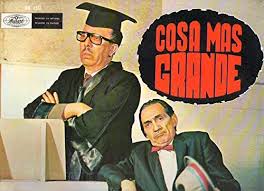
VIDA PERSONAL.
A lo largo de su vida, Leopoldo se casó en muchas ocasiones, estos son algunos de los matrimonios que se le conocen: 1) Lenia, se desconoce su nombre completo. Pudo ser la madre de Leopoldo “Pucho” Fernández II y Lenia. 2) Mimí Cal, con quien estuvo casado por 10 a 16 años. No hubo hijos en este matrimonio. 3) Eneida González, también conocida como Eny González, fue la esposa de Leopoldo durante el tiempo que este salió de Cuba. 4) Rosaura Andreu fue una actriz cubana conocida en Puerto Rico por su personaje “Titi Chagua”, la página web de la Fundación Román Rivero menciona al joven actor Miguelito Fernández, hijo de Rosaura Andreu y Leopoldo Fernández. Esta actriz falleció en noviembre de 2010, según se afirma en una publicación del periódico puertorriqueño El Nuevo Día, y en ese artículo se vuelve a mencionar el matrimonio y el hijo que ambos tuvieron. 4) Vilma Carbia. Fue su última esposa, y en este matrimonio no hubo hijos.
Lo que sí está claro es que tuvo varias parejas sentimentales más, pues de todos los hijos que tuvo, no todos son de los matrimonios antes mencionados. Leopoldo tuvo un total de ocho hijos, a todos se les reconoce porque llevan su apellido, aunque es difícil asegurar si todos fueron hijos de sangre o si alguno fue por adopción. El primero de ellos fue Leopoldo “Pucho”, fue un comediante muy querido en Puerto Rico con un personaje conocido como “20/20”, Lenia, Leopoldo Junior (Polito), Leonor, Leobaldo, Leonel y Leonora. De los últimos 5, no hay datos sobre quién fue su madre. El que falta por mencionar es Miguel (Miguelito), cuya madre fue Rosaura Andreu. De Leopoldo Fernández Jr. (Polito), se desconoce la identidad de la madre.
Hacia 1984 Leopoldo Fernández se retiró de la actuación. El gran comediante falleció en Miami el 11 de noviembre de 1985, a la edad de 82 años, allí residía junto a su esposa, la actriz puertorriqueña Vilma Carbia.


LEOPOLDO “POTOTO”/“TRES PATINES” FERNÁNDEZ, COMEDIAN. PERFORMED IN FILMS, THEATER AND TELEVISION. PHOTOS.
Leopoldo Augusto Fernández Salgado was a Cuban comedian, known as ‘José Candelario Tres Patines’ or ‘Pototo’, creator and performer of the radio and television program ‘La Tremenda Corte’, which is still presented on radio and is offered on CD. VHS and DVD.
Although he was born in Calimete, Matanzas Province, Fernández’s birth was recorded in the city of Güines, on December 26, 1904, about 30 miles south of Havana. At an early age, the family moved from Güines to Havana. He dropped out of school to work and help his family since he was young. He delivered bread; later, he was a telegrapher, cigar maker, and fortune teller until 1926, when he founded a theater company with some of his friends.
That same year he was hired to go on a national tour with Blanquita Gómez. When the tour ended he returned to his hometown and returned to his company; traveled to Havana. His performances took him to countries like Puerto Rico, Venezuela, Colombia, Peru, Panama, and the Dominican Republic, where people listened to La Tremenda Corte daily.
ARTISTIC CAREER.
In 1931 Fernández temporarily replaced the actor Alberto Garrido, holder of the roles of «negrito». Later, from December 1931 to January 1932, he was part of the Compañía de Revistas y Zarzuelas de Robreño-Grenet, at the Payret theater. To his acting work, he added those of artistic director and playwright.
It is in 1941 that the radio station RHC “Cadena Azul” inaugurates “La Tremenda Corte”. His facility for causing laughter in the audiences that attended his shows made him an insurmountable figure in Cuban popular theater. His secret lay in the contrast between his verbal grace and his raspy character framed by his inexpressive face and lean figure. His strength was in the word, in the sudden joke or the funny phrase said at the right moment, and that consists of saying the most hilarious and crazy things just by moving his hands and without changing his expression.
Among those who worked with Leopoldo in La Tremenda Corte, Aníbal del Mar (The Tremendous Judge), Adolfo Otero, Julito Díaz, Jesús Alvariño, Julita Muñoz, and the ineffable “Nananina”, recreated by Manuela “Mimí” Cal, are remembered. Trespatines woman for several years and whom he later divorced, although they continued working together on the program, sharing the inevitable break and tear, of come and go; natural among those who have been fire and now only keep embers.
His discography made up of comic dialogues and musical numbers with Aníbal de Mar, occupied the first places in the ‘hit parades’ of the time. One of his LPs won a Gold Record in 1957.
Leopoldo Fernández also popularized other humorous characters with great acceptance during the late 1950s and early 1990s, such as Vigilante Chegoya from the radio program “El Precinto Competidora” and “Domitilo” in the television production “Los Ricachos.” But after Trespatines, the character of Pototo, from the duet Pototo and Filomeno, was the one who once again led him to peaks of popularity. The program went from radio to television, and at the same time, the requested characters appeared in the shows of the nightclubs of Havana and in the cinematography of the time.
Some of the films starring Leopoldo Fernández were El vigilante Chegoya (1948); Music, women and pirates (1950); Contraband Prince (1950), Girls’ Hotel (1951), Olé… Cuba! (1957) and Furrows of freedom (1959). In many of these films he participated with his longtime friend Aníbal de Mar.
Sometime after the arrival of Fidel Castro to power in 1959, he arrived in Mexico, and later in Puerto Rico, participating in theater, television, and cinema. Between November 1960 and May 1962, he performed daily performances with the Leopoldo Fernández Magazine Company at the Estrada Palma Theater (called the Federico García Lorca Theater since 1961). By then Leopoldo Fernández was a famous man.
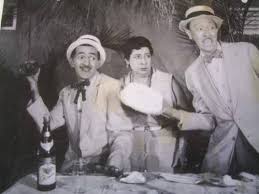
PERSONAL LIFE.
Throughout his life, Leopoldo was married many times, these are some of the marriages that are known to him: 1) Lenia, her full name is unknown. She may be the mother of Leopoldo “Pucho” Fernández II and Lenia. 2) Mimí Cal, whom he married for 10 to 16 years. There were no children in this marriage. 3) Eneida González, also known as Eny González, was Leopoldo’s wife during the time he left Cuba. 4) Rosaura Andreu was a Cuban actress known in Puerto Rico for her character “Titi Chagua”, the website of the Fundación Román Rivero mentions the young actor Miguelito Fernández, son of Rosaura Andreu and Leopoldo Fernández. This actress died in November 2010, as stated in a publication of the Puerto Rican newspaper El Nuevo Día, and in that article, the marriage and the son they both had are mentioned once again. 4) Vilma Carbia. She was his last wife, and there were no children in this marriage.
What is clear is that she had several other romantic partners, since of all the children she had, not all of them are from the aforementioned marriages. Leopoldo had a total of eight children, all of whom are recognized because they bear his surname, although it is difficult to ascertain whether all of them were blood children or if any were by adoption. The first of them was Leopoldo “Pucho”, he was a well-loved comedian in Puerto Rico with a character known as “20/20”, Lenia, Leopoldo Junior (Polito), Leonor, Leobaldo, Leonel, and Leonora. Of the last 5, there is no data about who her mother was. The one that remains to be mentioned is Miguel (Miguelito), whose mother was Rosaura Andreu. Of Leopoldo Fernández Jr. (Polito), the identity of the mother is unknown.
Around 1984 Leopoldo Fernandez retired from acting. The great comedian died in Miami on November 11, 1985, at the age of 82, there he resided with his wife, the Puerto Rican actress Vilma Carbia.

Agencies/ Wiki/ Leopoldo FernandezBio/ Extractos/ Excerpts/ Internet Photos/ Arnoldo Varona/ www.TheCubanHistory.com
THE CUBAN HISTORY, HOLLYWOOD.








